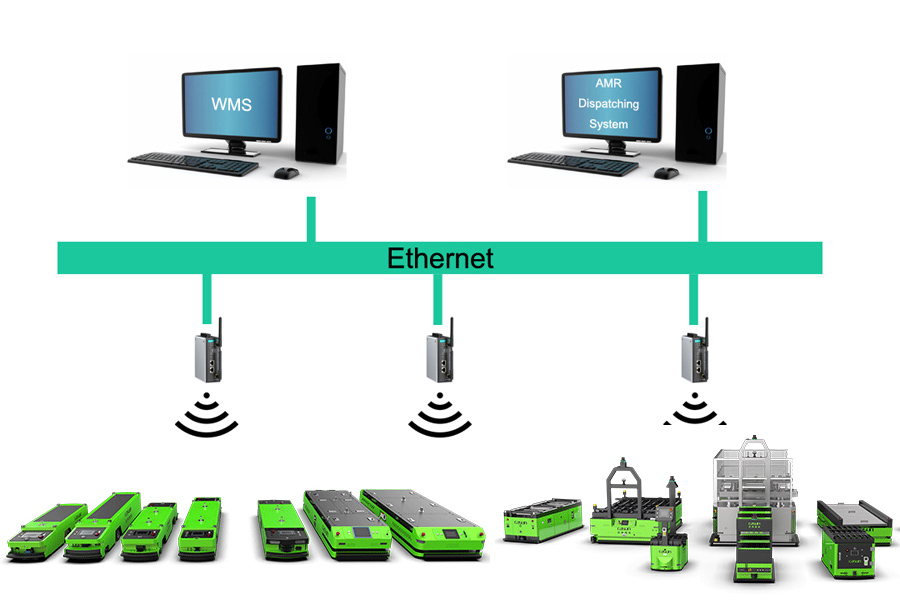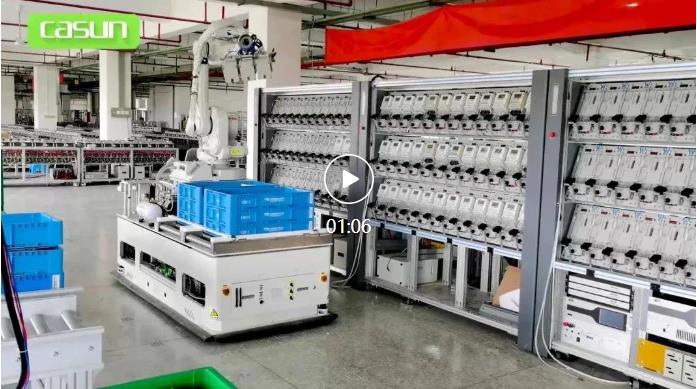Contents
1.1 Production planning management
The plan can be decomposed and related operations in the plan management module. The production plan in MES is mainly a production task decomposed according to the master order plan. MES also needs to have the function of establishing scheduled tasks, for example, establishing a production plan through Excel import or manual creation.
The plan management module is mainly used for plan management functions such as the preparation, decomposition, browsing, modification, activation, suspension and stop, and statistics of the production plan. The production master plan can directly read the company planning system data or manually create a multi-level job plan, and can be easily adjusted manually. Its main functions include:
- Real-time management of production orders
- Receipt and creation of production orders
- Production order query
- Plan schedule management
1.2 Process management
Process is the basis of production execution. For process management, the MES system will focus on the maintenance of basic process parameters, the interaction of operating instructions, and visualized operation instructions. Features include:
- Setup and maintenance of work center;
- Process parameter configuration maintenance;
- Paperless inquiry of operation execution guide;
1.3 Production and distribution management
The issuing area displays the batch number/work order list of the products that have been scheduled but not put into production in the order of scheduling. Select the batch number/work order list, and the system lists the names and quantities of materials to be prepared in the list. Material preparation data (including production replenishment) must include information such as work orders, materials, quantities used, workshops, and workstations.
After the material is delivered to the work station in time according to the production requirements, the system reminds the operator to receive the material through the execution interface, email, text message, etc., and the operator scans the bar code of the material frame or rack through the MES system in time (receiving timeout time) Can be set) Check the point to receive materials, if the set time is exceeded, the system will automatically receive materials.
1.4 Production execution management
The production execution management module mainly includes functions such as sending production preparation instructions, scheduling production tasks, issuing production tasks, and managing work orders. You can query and export the work order information generated by the schedule.
1) Work order execution management
The MES system automatically generates production preparation instructions and production work orders according to the planned tasks. The content includes various information such as product name, drawing number, process name, equipment name, and working hours.
Work order execution management includes:
- Push the scheduled production work orders to each production workshop and production equipment to form the production tasks of each production unit. After each production unit receives the task, it will issue, cancel, and close the production work order according to the actual production situation.
- The production work order can be associated with NC programs, processing drawings, SOP operation instructions, and displayed on the operation terminal computer of the production unit.
- According to the report status of the production work order, the progress of the work order execution can be displayed in real time and displayed in a graphical manner.
2) Production report
Production reporting means that the operator reports work in the MES system or automatically reports work according to the data transmitted from the equipment (equipment support is required).
The production report includes:
- Start report
- Production report
- Quality report
- Abnormal report
1.5 Abnormal alarm
The MES system supports production abnormal alarms, timely feedback on abnormal conditions in the production process, such as production shortages, abnormal shutdowns, equipment maintenance alarms, etc., and forms a system log to provide a data basis for problem tracking.
- Support the alarm of unqualified parameters and results of production and test equipment.
- Support the alarm of wrong production process.
- Support error-proof alarm for material use.
- Support yield alarm.
- Support the operation of locking and unlocking the production line, equipment shutdown and resumption when alarming.
- Support the mobile terminal to handle various alarm abnormalities.
- Record various alarm information, including but not limited to: shift, line type, personnel, alarm time, alarm content, processing time, processing personnel, processing results, etc.
- Support the setting of alarm parameters, including but not limited to: yield parameters, bad alarm codes, and detection limit settings.
1.6 Quality Management
The MES quality management module is mainly to solve the quality activities and quality management in the production process at the workshop level, including production process quality data management, semi-finished product quality management, quality tracking and tracing, quality statistical analysis, etc.
MES will build intelligent management in quality management to improve the means of quality management, supervision, data accuracy and production quality, which are mainly reflected in:
1) Improve operational performance: improve the supervision of the repair process, strengthen the monitoring of the finished quality inspection process, statistical analysis of the results, reduce invalid repair behaviors, and optimize production execution; form a quality database to provide support for quality analysis and production optimization ; Realize customer problem tracking, customer repair quality tracking, provide support for improving product quality, and cooperate with visual quality services to form a quality management system.
2) Optimize working capital: reduce energy consumption, material consumption, and save costs through optimization of quality.
Quality management includes incoming material inspection and process inspection,
Incoming Material Inspection: Inspection is carried out based on inspection tasks and inspection models generated by the scanned goods in the warehouse.
Process inspection includes: defining some important positions, with finished product performance inspection, full inspection data extraction function of important position inspection data; IPQC part of the key inspection data needs to be able to enter the system, manual entry, abnormal alarm, and monitoring of processing progress. Various types of data can be called, summarized and analyzed in multiple dimensions.
Manual/automatic collection of process quality information can be realized through on-site terminals and various automated testing equipment. The main functions include:
- The inspection plan and the workshop operation plan are all bound. After receiving the inspection plan, the inspector can quickly prepare for the inspection and conduct the inspection in time;
- It has the functions of quality information input, processing, query, tracking, printing, etc., and supports input methods such as PDA and workstation terminal;
- Be able to carry out all inspection records of the production and processing process including the first inspection, self-inspection, patrol inspection, key parts and important post inspections, and show the quality characteristics formed by each process of the parts;
- A quality inspection model can be established in the system to help inspectors provide inspection data and inspection basis to improve inspection efficiency.
- The non-conforming product shall be reviewed and managed to determine whether it is repaired, accepted under concession, or scrapped.
- Quality traceability can be carried out in batches and single pieces.
- Reverse tracing: follow up the results of quality analysis, and perform reverse query for problematic batches, such as which products are used in a certain batch of parts, etc.;
- Forward traceability: When there is a problem with parts/raw materials, in addition to obtaining previous process information through reverse inspection, you can also quickly find the usage of the material batch on other finished products by locating the material batch number. Which customers were sent to.
- Single piece management: According to the product piece number and assembly relationship, the single piece number, batch number, etc. of each component can be traced, and the production process information of a certain part can be traced, including the operator, production equipment, operation process, and manufacturing Time, quality information, etc.;
- Multi-dimensional analysis and display of product quality, discovering regularities and trending issues, are conducive to improving product quality.

